|
On
August 24, 1923 King Khai Dinh (1916-1925) issued a decree on establishing
the Khai Dinh Museum, the forerunner of the present-day
Hue
Royal Antiquities Museum . The purpose of setting up
the museum was defined clearly, i.e. talents of a nation are reflected
through the fine arts works that describe social activities, rituals,
political and daily events… From the very beginning of its existence, the
museum was entrusted with the duty, “to revive generations of artisans who
had built up the glorified Hue royal court.”
Hue
Royal
Antiquities
Museum
, now under the
administration of the Hue Monuments Conservation Centre, has preserved and
displayed nearly 10,000 antiquities relating to the life during the Nguyen
Dynasty (1802-1945). The main showroom is Long An Palace, which is
considered one of
Vietnam
’s
most beautiful, existing palaces.
|

Long An Palace, one of the most beautiful
palaces in the imperial city ofHue,
is now
Hue
Royal Antiquities Museum.
|
|

An
old ceramic vase with flowery designs.
|
|
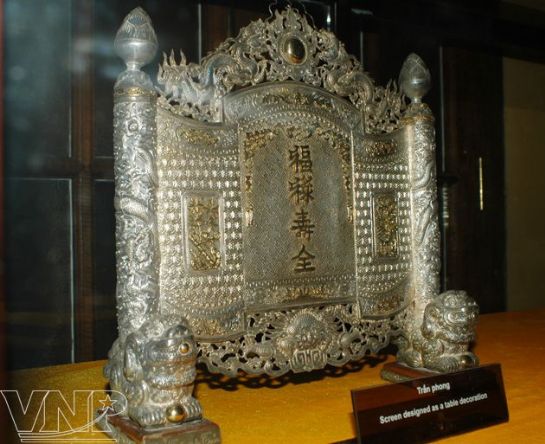
A
screen made of silver.
|
|
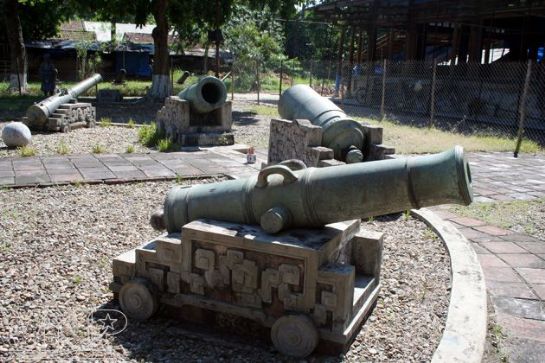
A
collection of 30 cannons of different types.
|
|
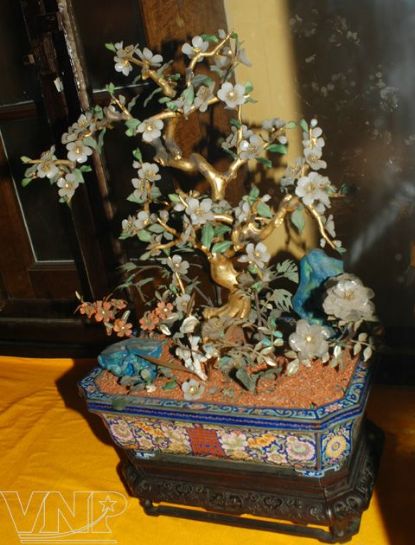
A
set of gold branches and jade leaves.
|
|

Long An Palace’s
interior.
|
|

Porcelain ware made in
the time of King Thieu Tri (1841-1847).nbsp;
|
|
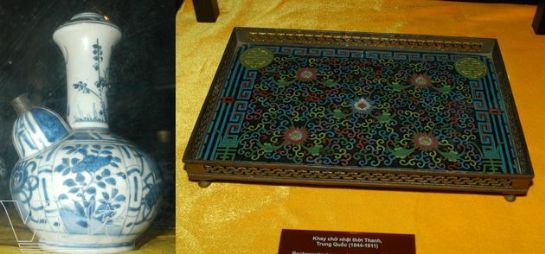
An enamelled wine jar (left)
and anbsp;tray holding
Hue
enameled bronze
ware.
|
|

A
copper urn inlaid with silver and gold and a bowl with green
enameled design.
|
|
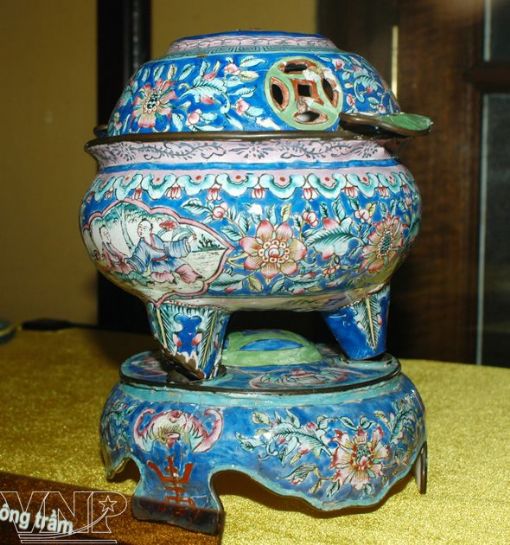
Anbsp;fragrant aloe wood
burner.
|
|
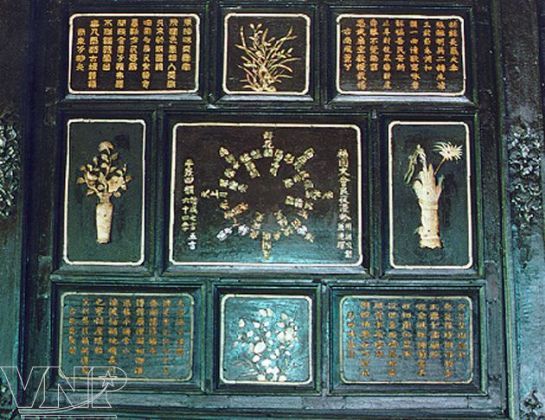
Inlaid designs and
poems on the drawer’s face.
|
|
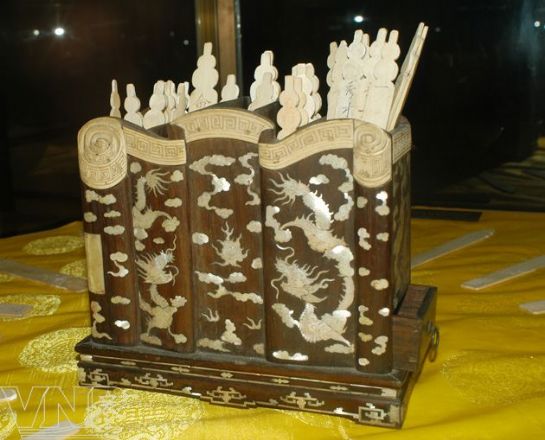
A
lacquer holder with cards made of ivory.
| nbsp;
Long An
Palace is located on an area of 6,330m², its main showroom for the
antiquities is 1,200m². There are 16 typical collections of items
displayed inside and outside the Palace, including many of Vietnam’s
precious handicraft fine arts objects such as Hue enamelled bronze wares,
sets of gold tree branches and jade leaves, sets of wooden articles inlaid
with mother-of-pearl or painted with red lacquer trimmed with gold, and
copper antiquities made by Hue artisans. Long An Palace was built under
the time of King Thieu Tri (1841-1847). It consists of seven compartments
and two annexes plus 128 pillars made of precious timbers. The entire
wooden parts are carved with beautiful scenes, the four sacred animals
(dragon, lion, tortoise and phoenix) and more than 1,000 poems in Chinese
scripts. Among them, there are two poems composed by King Thieu Tri, each
having 56 words and engraved in the shape of the eight-sign figure that
turns into 64 different seven- and five-word verses.
Long An Palace is a
valuable museum, which displays poetic and painting works, a collection of
literary pieces, historical references and stories, thoughts of nature and
rules laid out by King Minh Mang (1820-1840), King Thieu Tri (1841-1847)
and King Tu Duc (1847-1883). The Palace is a wonderful combination of
architecture, poems and paintings that are reflected clearly through the
carvings on wood. The art works and utensils of the Nguyen kings and royal
families were made by skilful Vietnamese artisans with such materials as
gold, silver, jade, ivory, glass, stone, wood, leather, fabrics, paper,
bamboo, rattan and terra cotta. In addition, 80 objects of the Cham ethnic
people found in 1927 in O and Ly areas and Tra Kieu ancient capital are
considered valuable objects of the Far
East and the world over. In the palace, there is a folding
screen painted by painters of the Indochina College of Fine Arts 70 years
ago. It was engraved and painted with pictures of 78 Hue women wearing
the Ao Dai with different designs and colours.
Outside the palace, there are on display a collection of 30 cannons of
different types made in the Nguyen Dynasty and previous time. Besides
cannons, in the court yard there is a collection of stone statues and
stelae made in the Le Dynasty (1428-1527, 1533-1788) and the Nguyen
Dynasty (1802-1945). The most significant collection is that of large
bronze bells, cauldrons, urns and pots.
When visiting
Hue Royal Antiquities Museum, visitors will have a chance to enjoy the
masterpieces made by Hue artisans over 700
years of development in the imperial city of Phu
Xuan – Hue.
Story: Vinh
Hung
Photos: Cong Dien
–Vinh Hung – Quang Ngoc – Hai Trung |